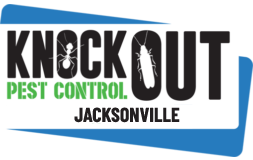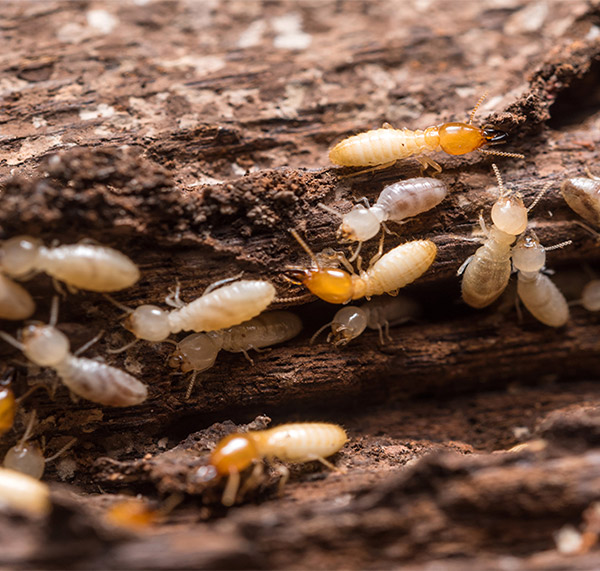WOOD DESTROYING ORGANISMS IN NORTHEAST FLORIDA
Most commonly when the term wood destroying organism comes up, people think of termites. However, the state of Florida is home to several other WDOs, including beetles and wood-decaying fungi. When it comes to termites, the environment in Florida means infestations are fairly common. Subterranean termites are among the state’s most dangerous when it comes to damages incurred by buildings and items within them. Each year, these termites cause billions of dollars of damage nationwide and pose safety risks when that damage affects the structural integrity of the building.
Part of the reason why is because once an infestation has reached a point where visible damage is noticeable, it’s likely a significant issue exists that has been causing damage behind the scenes for a while. As their name suggests, subterranean termites live underground, building mud tubes to connect their underground habitats to the ground’s surface and food sources. Mud tubes are sometimes referred to as mud tunnels or galleries.
The harm from termites and other WDOs doesn’t come from diseases they carry or bacteria they spread like the other household pests. It comes from their diet. Termites feed on wood and other items containing cellulose, which may include plants, paper products, or fabric. Different types of termites prefer different types of wood or fibers. However, all wood in Florida homes and businesses are potential victims. When subterranean termites feast on a piece of wood, they leave it resembling a honeycomb, greatly reducing its structural integrity. Often called “ silent destroyers,” the structural damage a colony of termites can cause in a short amount of time is significant. Also, termites don’t exclusively munch on a building’s structure. They will destroy wood furnishings and fixtures inside it as well.
Identifying a termite issue may happen in a number of ways. You may find mud tubes or see a termite swarm. As they swarm in early summer, termites shed their wings, so spotting these discarded body parts is another sign of an issue. Not all signs are visual, either. Hollow sounds when tapping a piece of the building’s structure or furniture or floorboards that have become excessively squeaky can both indicate a problem. On drywall, potential warning signs include dropping or discolored patches or the existence of tiny holes on the surface. Unfortunately, these are signs the issue is already significant. Identifying a problem before that stage requires a regular cadence of WDO inspections.
WDO INSPECTIONS AND TREATMENTS FROM KNOCKOUT PEST CONTROL
Before the transfer of ownership of a property, most buyers request a WDO inspection to identify any existing or potential issues with termites or other WDOs. Doing so is important, because Florida buildings have some of the highest infestation rates for these types of pests in the nation. A WDO inspection involves a thorough examination of all areas of a building prone to termites and other harmful pests. Inspectors look for the existence of live organisms as well as evidence of their existence in the past and any current damage. The State of Florida requires that professionals performing WDO inspections are properly trained and certified. Upon completion of the inspection, pest professionals will issue a WDO letter or inspection report with all the findings as well as recommendations for treatment of any issues.
In addition to securing a WDO inspection before buying a property, regular, ongoing inspections are a smart idea for homeowners looking to stay ahead of any potential issues. Because visible damage generally appears once an issue is escalated, regular inspections allow homeowners to catch those issues prior to them escalating.
If WDO issues are identified during one of these inspections, the pest professional will provide recommendations for how to treat the existing issue as well as precautionary steps to best prevent it from recurring down the road. WDO treatments vary depending on the type of home, severity of the infestation, and a number of other factors. Often, pest control experts recommend non-repellents or liquid termiticides like Termidor.™ The substances are applied to the soil surrounding the building, creating an invisible barrier that kills termites if they dig through the area. Often, this type of treatment solves the issue right away, making it a common recommendation by professionals. However, in other cases, bait stations or misting systems might best mitigate the issue.
With Knockout Pest Control, no matter what a WDO inspection finds, we partner with home and business owners to identify and implement solutions to either continue to keep it free from wood-destroying organisms or address any existence of them on the property in a way that gives you peace of mind knowing the building and people within it are protected. Whether you’ve noticed signs of a potential WDO infestation, are purchasing a new home, or simply want to take the required steps to keep your existing home termite free – we encourage you to contact Knockout Pest Control today!


